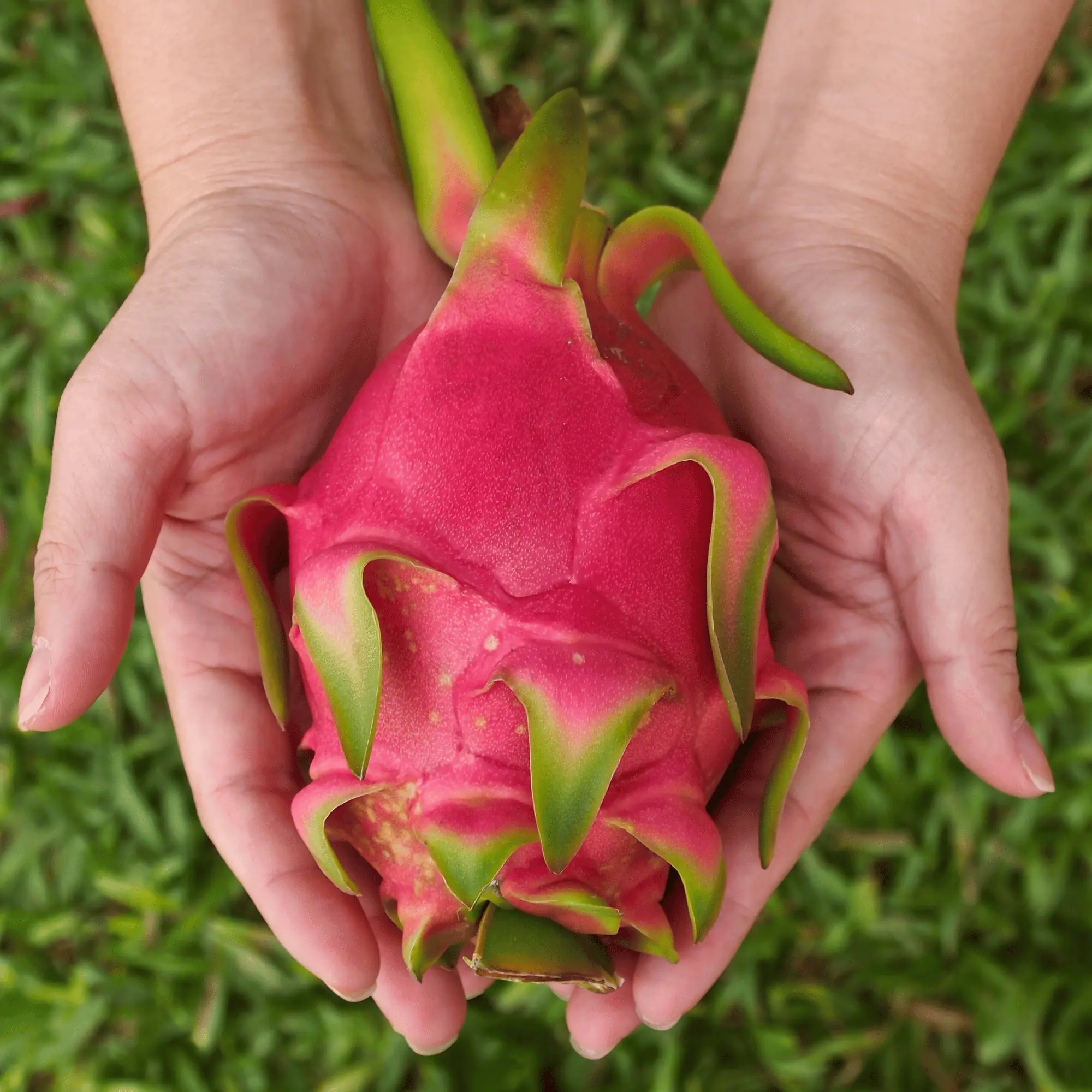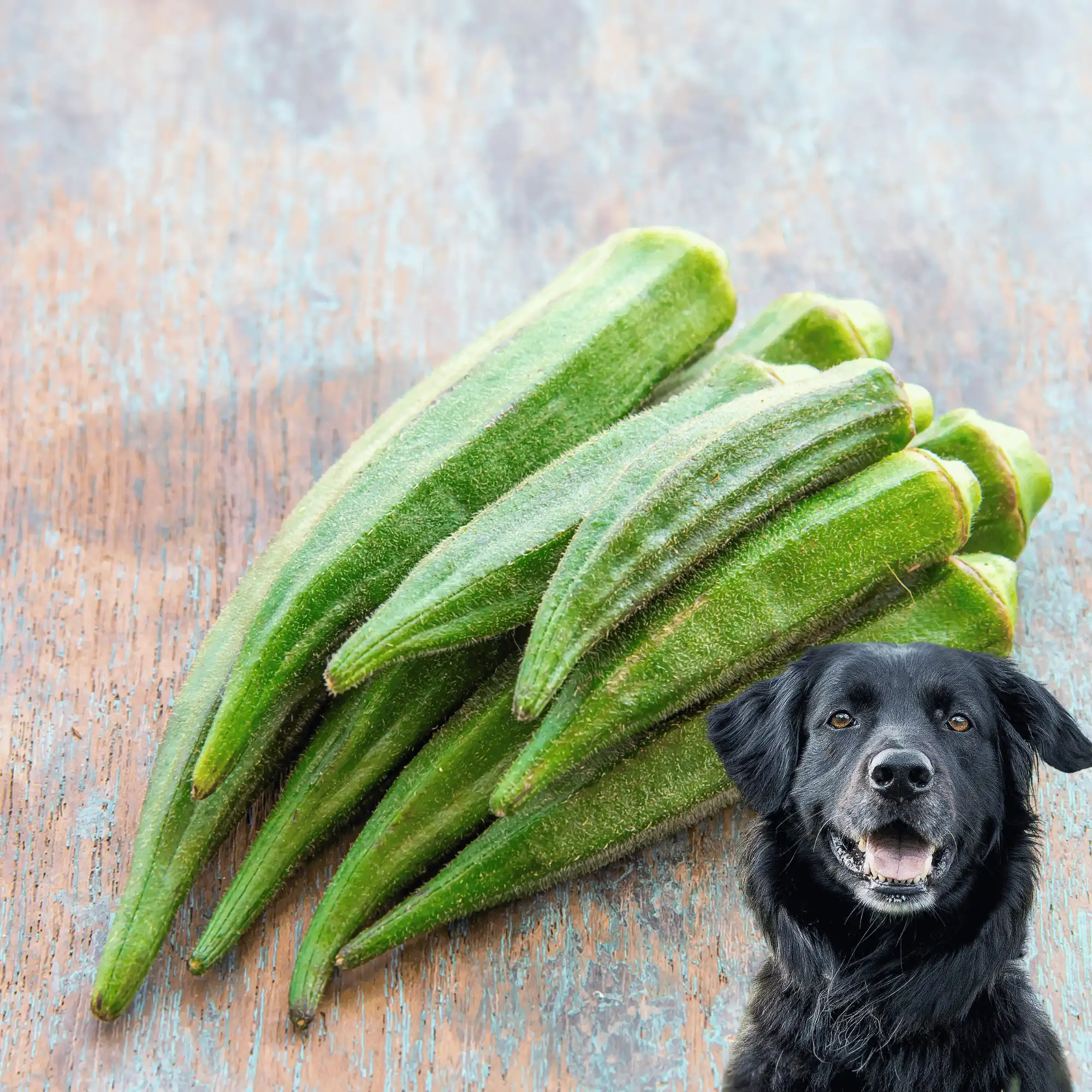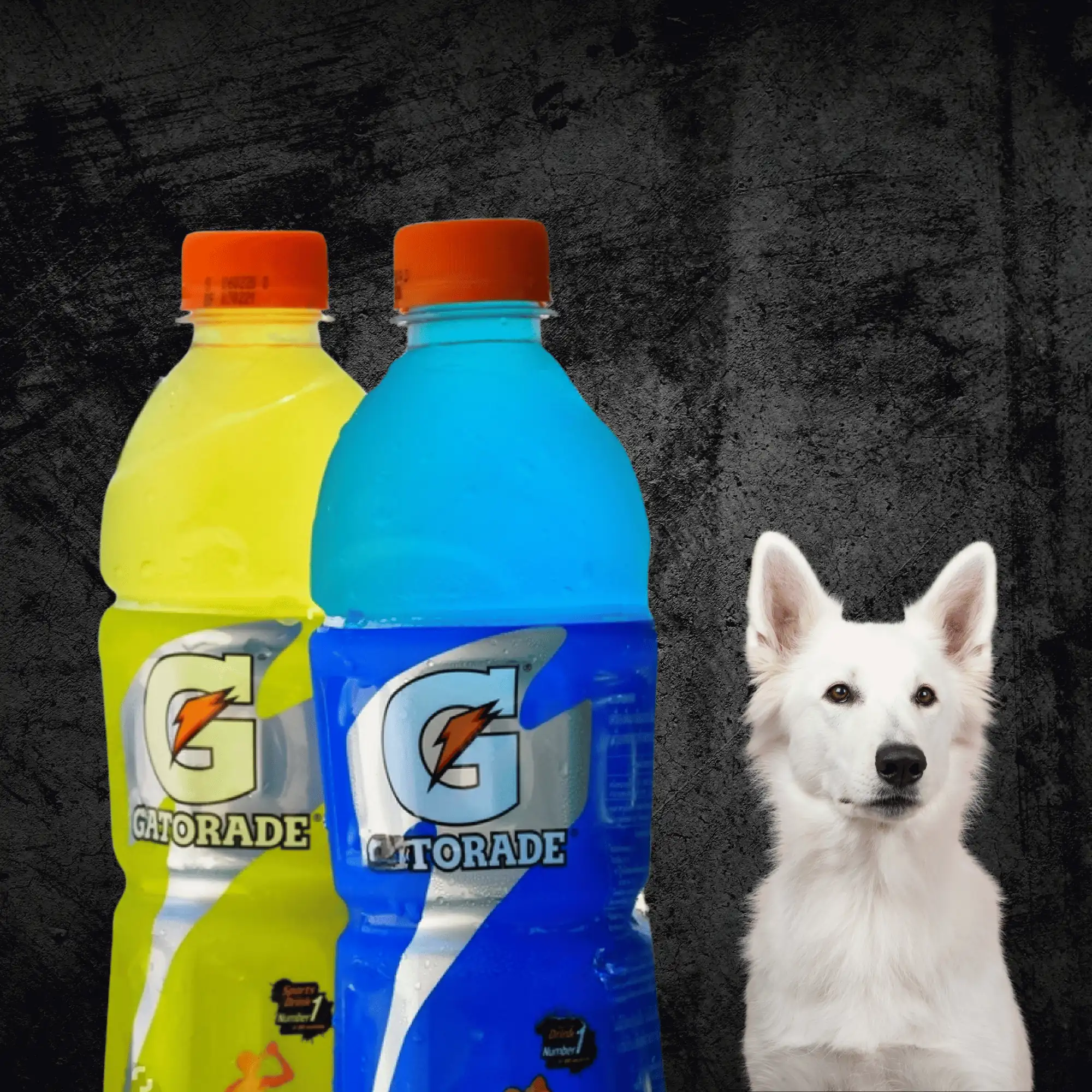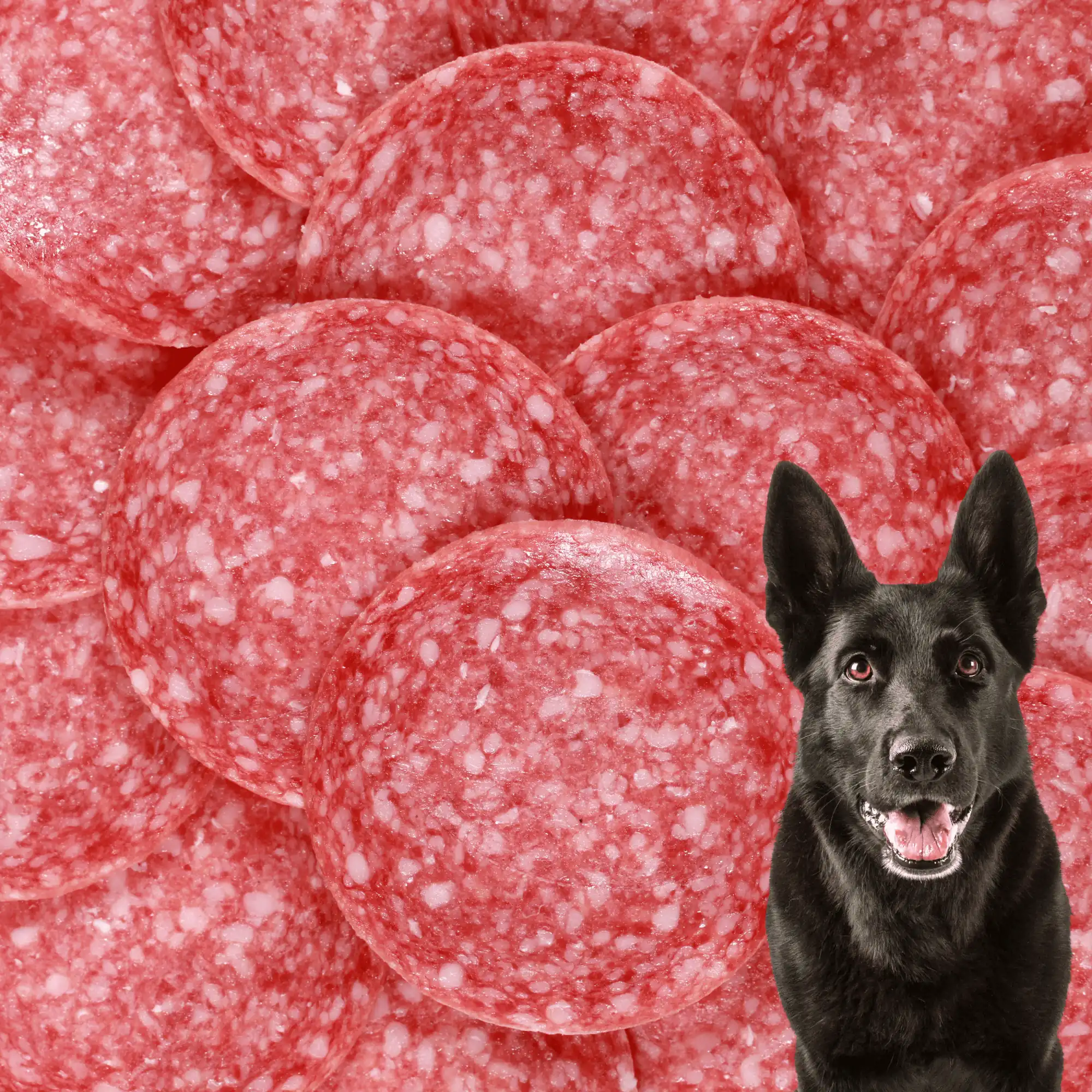Basil is a familiar herb, adding delightful aroma and flavor to our dishes. But, as a pet owner, have you ever considered sharing some basil with your dog, like sprinkling it on a pizza or salad? You might wonder if it’s safe for them to eat basil. Well, here’s the good news: dogs can enjoy basil too! It’s not harmful to them and might even have some health benefits. However, it’s essential to remember that basil should only be a small part of their diet, not the main component.
In this article, we delve into the potential benefits and risks of adding basil to your dog’s diet. From its aromatic allure to its potential health impacts, we’ll cover everything you need to know about incorporating basil into your furry companion’s meals. Let’s navigate the world of basil for dogs together.
Below are the topics we’ll explore in this blog post:
- What is Basil?
- Can Dogs Eat Basil?
- Nutritional Value of Basil for Dogs
- Health Benefits of Basil for Dogs
- Potential Hazards of Basil for Dogs
- How Can You Safely Give Basil to Your Dog?
- Exploring the Safety and Benefits of Other Herbs for Dogs
What is Basil?

Basil, scientifically known as Ocimum basilicum, belongs to the mint family (Lamiaceae) and is cultivated for its fragrant leaves. Originating possibly from India, basil is extensively cultivated as a culinary herb. Its fresh or dried leaves add flavor to various dishes such as meats, fish, salads, and sauces. Additionally, basil can be brewed into tea, known for its stimulating properties.
Can Dogs Eat Basil?
Yes, dogs can safely eat basil. It’s not toxic to them, and it can even offer some health benefits. However, basil should only be given to dogs in moderation and as an occasional treat, not as a primary part of their diet.
As with any new food, it’s a good idea to introduce basil gradually and observe your dog for any adverse reactions. Always consult with your veterinarian if you have any concerns about the safety of foods for your dog.
Nutritional Value of Basil for Dogs:
Basil contains several nutrients that can be beneficial for dogs when given in moderation. Here’s a brief overview of the nutritional value of basil:
1. Vitamins:
Basil is rich in vitamins A, K, and C. These vitamins play various roles in supporting your dog’s overall health, including immune function, vision, and bone health.
2. Minerals:
Basil contains minerals such as calcium, iron, magnesium, and potassium. These minerals are crucial for maintaining healthy bones, muscles, and overall bodily functions.
3. Antioxidants:
Basil contains antioxidants such as flavonoids and polyphenols, which help neutralize harmful free radicals in the body and may provide anti-inflammatory and anti-cancer benefits.
4. Essential Oils:
Basil contains essential oils, such as eugenol and linalool, which may have antibacterial and antifungal properties.
Overall, while basil may not be a primary source of nutrition for dogs, it can be a healthy addition to their diet when given in moderation. As with any new food, it’s essential to introduce it gradually and monitor your dog for any adverse reactions. If you have concerns about your dog’s diet or specific nutritional needs, consult with your veterinarian for personalized recommendations.
Health Benefits of Basil for Dogs:

Basil can offer several potential health perks for dogs when incorporated into their diet in moderation:
1. Anti-Inflammatory Properties:
Dogs, especially older ones, may suffer from arthritis, causing inflammation in their joints and discomfort. The anti-inflammatory properties of basil may help alleviate some of the inflammation associated with arthritis, reducing pain and improving mobility.
Dogs with IBD experience inflammation in their gastrointestinal tract, leading to symptoms like diarrhea, vomiting, and abdominal pain. Basil’s anti-inflammatory properties may help soothe the inflammation in the digestive system, potentially providing relief from these symptoms.
2. Antioxidant Properties:
Antioxidants in basil help neutralize harmful free radicals in the body. Free radicals are unstable molecules that can damage cells, proteins, and DNA, leading to oxidative stress and increasing the risk of chronic diseases such as cancer, heart disease, and cognitive decline. By scavenging free radicals, antioxidants help protect cells from damage and maintain overall health.
Oxidative stress has been linked to cognitive decline and neurological disorders in dogs, such as cognitive dysfunction syndrome (similar to Alzheimer’s disease in humans). Antioxidants help protect brain cells from damage and may slow down the progression of age-related cognitive decline, promoting brain health and cognitive function in dogs.
3. Digestive Support:
While basil is not a significant source of fiber, it does contain small amounts. Fiber is essential for maintaining digestive health in dogs, as it promotes regular bowel movements, prevents constipation, and supports the growth of beneficial gut bacteria.
Some dogs may experience a loss of appetite due to digestive issues or gastrointestinal discomfort. Basil’s aroma and flavor may stimulate their appetite and encourage them to eat.
4. Stress Reduction:
The aroma of basil has been suggested to have calming effects on dogs. Aromatherapy involves exposing animals to the scents of certain essential oils, including those found in basil, to promote relaxation and reduce stress levels. Diffusing basil essential oil or incorporating fresh basil into your dog’s environment, such as in their bedding or play areas, may help create a calming atmosphere.
Some research suggests that certain compounds found in basil, such as linalool, may have mild anxiolytic (anti-anxiety) effects. Linalool is a natural compound known for its calming properties and is found in various plants, including basil. By inhaling the scent of basil or consuming small amounts, dogs may experience reduced anxiety levels.
Potential Hazards of Basil for Dogs:
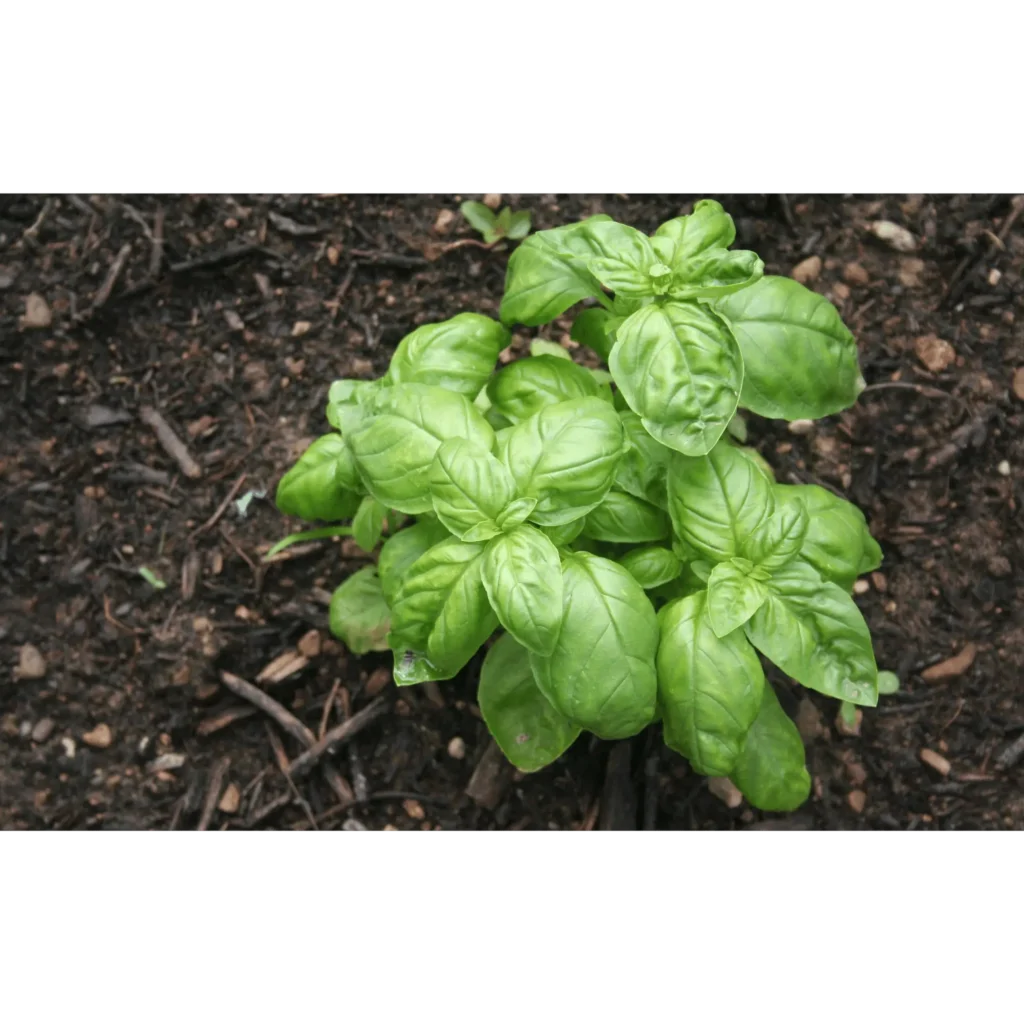
While basil is generally considered safe for dogs in moderation, there are potential hazards to be aware of:
1. Allergic Reactions:
Some dogs may have allergies to certain plants, including basil. Signs of an allergic reaction may include itching, redness, swelling, hives, vomiting, diarrhea, or difficulty breathing. If you notice any of these symptoms after giving your dog basil, discontinue use and consult with your veterinarian.
2. Gastrointestinal Upset:
Giving your dog large amounts of basil or introducing it suddenly into their diet can lead to gastrointestinal upset. This may manifest as symptoms such as vomiting, diarrhea, or abdominal discomfort. It’s best to start with small amounts of basil and monitor your dog’s reaction before increasing the quantity.
3. Toxicity from Essential Oils:
While fresh basil is generally safe for dogs, concentrated essential oils derived from basil can be toxic if ingested in large quantities. Essential oils are highly concentrated and may contain compounds that are harmful to dogs. Avoid giving your dog essential oils or products containing essential oils without consulting with your veterinarian first.
4. Potential Interactions with Medications:
Basil contains compounds that may interact with certain medications or supplements your dog is taking. If your dog is on medication or has a pre-existing medical condition, consult with your veterinarian before giving them basil to ensure there are no potential interactions.
5. Basil Varieties:
Some varieties of basil, such as Thai basil or lemon basil, may have different flavors or properties than sweet basil. Ensure that the type of basil you’re offering to your dog is safe for consumption and does not contain any additional ingredients or seasonings that could be harmful.
How Can You Safely Give Basil to Your Dog?
Feeding basil to your dog can be a safe and enjoyable experience. Both fresh and dried basil are considered non-toxic to canines, making them suitable for supplementation in your pet’s diet. Sprinkle some dried basil atop your dog’s meals as you would with any other dietary supplement.
If your furry friend shows interest in fresh basil, you can offer it to them directly or incorporate it into their meals for an added burst of flavor.
It’s important to note that while basil itself is safe for dogs, other basil-infused foods like pesto or sauces may contain ingredients like garlic or onions that could be harmful. Stick to feeding your dog plain basil to avoid any potential risks.
When determining the appropriate amount of basil for your dog, it’s best to consult with your veterinarian. While basil may not offer significant nutritional benefits for dogs and is low in calories, your vet can guide you on incorporating it safely into your pet’s diet.
Exploring the Safety and Benefits of Other Herbs for Dogs:

Incorporating herbs into your dog’s diet can be beneficial, but it’s essential to be aware of their specific benefits and potential risks. Here’s a breakdown of some common herbs and their effects on dogs:
- Parsley:
Known for freshening breath and containing antioxidants, parsley is generally safe for dogs. However, spring parsley, a similar-looking plant, can be toxic, so stick to the common variety.
- Mint:
Like parsley, mint freshens breath and aids digestion. However, large quantities may upset your dog’s stomach, so use it in moderation.
- Ginger:
Great for digestion and nausea relief, ginger should be given sparingly, as it can be too spicy for some dogs.
- Rosemary:
While it has antioxidant properties, rosemary’s strong flavor may irritate some dogs’ stomachs. Use it sparingly.
- Thyme:
With its antibacterial properties, thyme can be beneficial, but its intensity means it should be used in small amounts.
- Oregano:
With its antifungal, antibacterial, and anti-inflammatory properties, oregano supports the immune system. Use it in moderation, as its oil can be irritating.
- Sage:
It supports digestive health but should be given carefully, as certain types can be toxic in large amounts.
- Chives:
Part of the onion family, chives can be harmful to dogs, causing gastrointestinal upset or anemia. Avoid them altogether.
When adding herbs to your dog’s diet, remember to do so in moderation. Always use the correct part of the plant and ensure it hasn’t been treated with pesticides or other harmful chemicals. By being cautious and informed, you can incorporate herbs safely into your dog’s meals and support their overall health and well-being.
Conclusion:
In conclusion, while basil can be a safe and flavorful addition to your dog’s diet when given in moderation, it’s essential to be mindful of potential risks and considerations. Basil offers some nutritional benefits and may provide relief for certain health issues, like inflammation and stress. However, it’s crucial to introduce basil gradually and monitor your dog for any adverse reactions, especially if they have allergies or sensitivities.
Additionally, it’s important to avoid other basil-infused foods like pesto or sauces that may contain ingredients harmful to dogs, such as garlic or onions. When in doubt, stick to plain basil and consult with your veterinarian before making any significant changes to your dog’s diet.
Furthermore, while basil is just one herb that can benefit dogs, there are many others to explore, each with its own set of benefits and precautions. Whether it’s parsley for fresh breath or ginger for digestion, incorporating herbs into your dog’s meals can offer various health perks when done safely and in moderation.
By following these guidelines and learning about the benefits and risks of giving herbs to your dog, you can help them stay healthy and happy. Always prioritize your dog’s health and consult with your veterinarian for personalized recommendations.
FAQs:
Can dogs eat raw basil?
Yes, basil is beneficial for dogs in small amounts. It’s anti-inflammatory, rich in antioxidants, and can prevent illness, including cancer. Basil also calms anxiety and eases arthritis pain. However, introduce it gradually and consult your vet beforehand.
Is the basil plant toxic to dogs?
Sweet basil is safe for dogs and free from harmful toxins. It offers health benefits such as anti-inflammatory properties and digestive support. Remember, moderation and consulting your vet are crucial when introducing basil to your dog’s diet.
Do dogs like the taste of basil?
You can offer freshly chopped or dried basil to your dog, but not all may enjoy it. Another option is to bake basil into treats for them. If your dog enjoys the finer things, basil-infused treats can make them feel special!
Does basil give dogs diarrhea?
Moderation is crucial when introducing basil to your dog’s diet. While basil itself isn’t toxic, overfeeding can lead to gastrointestinal issues like vomiting, diarrhea, or changes in appetite. Be cautious and observe your dog’s response.









